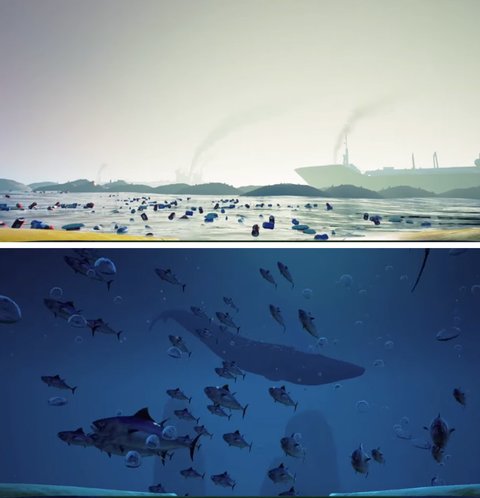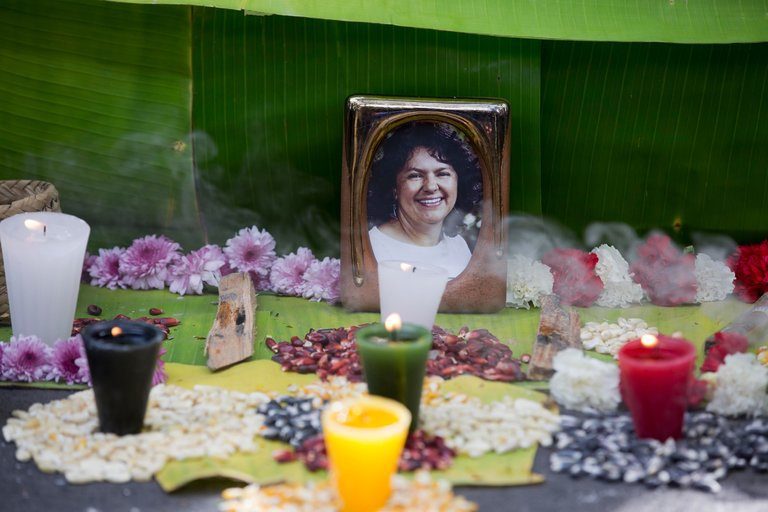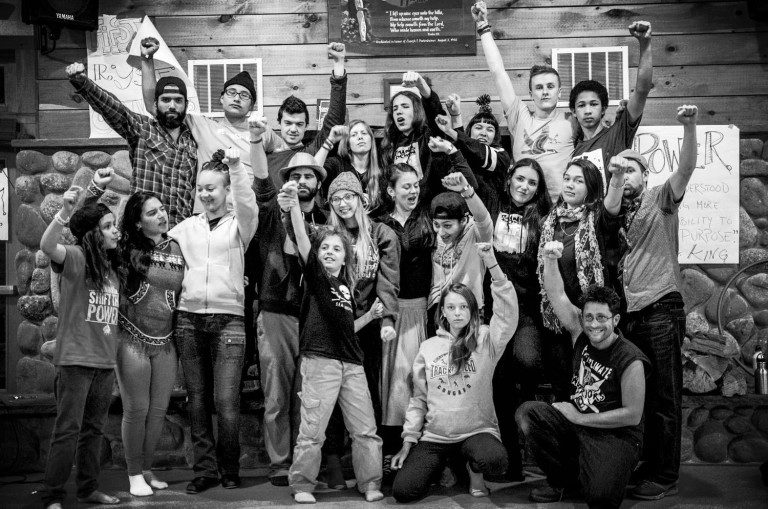By ANDREW C. REVKIN
MARCH 15, 2016 2:43 PM March 15, 2016
Two scenes from a virtual-reality “ride” that takes viewers into the realm of whales, fish and sonic and plastic pollution.Credit Dell
On a weekend visit to South by Southwest, the annual Austin festival focused on the intersection of ideas, technology, music and film, I ran into Adrian Grenier, who’s best known as an actor but is building a career as a filmmaker and campaigner with a focus on the environment.
Adrian Grenier shows off a 3-D virtual reality ocean journey at the South by Southwest festival in Austin, Tex.Credit Courtesy of Dell
Grenier, who last year signed on as the “social good advocate” for Dell, was there with the company’s sustainability and supply-chain directors and a remarkable virtual-reality “ride,” for lack of a better description, in which goggle-wearing people siting in vibrating, hissing chairs plunge deep beneath the sea. They are greeted by shoals of fish, carpets of plastic pollution, the booms of seismic probes used to prospect for oil and an imagined rendering of a “lonely whale” that I wrote about long ago. That whale, detected because its voice was at a 52-hertz frequency distinct from other large cetaceans, is the subject of a film and multimedia project that Grenier has been developing with the filmmakers Josh Zeman and Lucy Cooper.
The three-minute virtual journey, called “Cry Out: The Lonely Whale Experience,” debuted in December in Miami and made a stop at the Paris climate negotiations. But new features have been added, including one that creates the feeling that the virtual schools of fish swimming past you are brushing your legs.
To learn more about how Grenier developed what he calls “a fully immersive whale-D experience,” read John Gaudiosi’s detailed story in Fortune and watch this Dell video. (The Times, on both the news and commerce sides, has gotten into this technology in a big way, as well.)
I’ve wondered about the limits of virtual experience in altering actual human priorities and behaviors. But if this kind of journey could be more widely shared, perhaps through a simpler technology like the inflatable projection domes of David McConville and others, I could see it having some impact.
While visiting the Dell venue in Austin, I also learned about a planned push by the company to develop packaging out of plastic retrieved from the seas, which is sadly sufficiently abundant off Asia’s Pacific shores to be seen as a resource — although hopefully not a renewable one for much longer! You can learn more about that below. (This isn’t the first look at low-impact packaging by Dell, which was one of the first big companies to try shipping delicate gear using packaging made of wheat straw, bamboo and mushrooms — the latter produced by Ecovative, a start-up I wrote about in 2012.)
Finally, I was reminded that the deadline is quickly approaching (March 31) for a “Legacy of Good” documentary film contest developed by Dell, Grenier and other partners — with the goal of creating short videos describing the merits of building a “circular economy.” A 2014 article in The Times neatly summarizes that concept:
In a traditional linear economy, products are made from raw materials and everything — byproduct waste and product alike — ends in the scrap heap. In a circular economy, the product is made from recycled materials and ends up being recycled itself.
I’ve alerted this year’s crop of Pace University documentary students along with veterans of the last five years of environmental filmmaking by our program. I hope you’ll spread the word, as well.
And here’s some background from Dell on its effort to test whether there’s a way to reliably, practical way to turn the masses of plastic we’ve added to the oceans into something useful back on shore:
We are in the process of conducting a feasibility study to determine if we will be able to use recycled plastics from oceans and waterways in Dell product packaging, which is our goal. The feasibility study should be completed in six months, the results of which will determine whether we will be able to move to the pilot phase. A pilot would run approximately 4-6 months.
We are confirming the material characteristics needed to meet our and third-party performance and environmental standards, such as EPEAT, and will test supplier samples for quality.
We are currently evaluating potential suppliers and exploring supply chain process options including manufacturing and tooling and sourcing “ocean plastics” near the point of origin.







